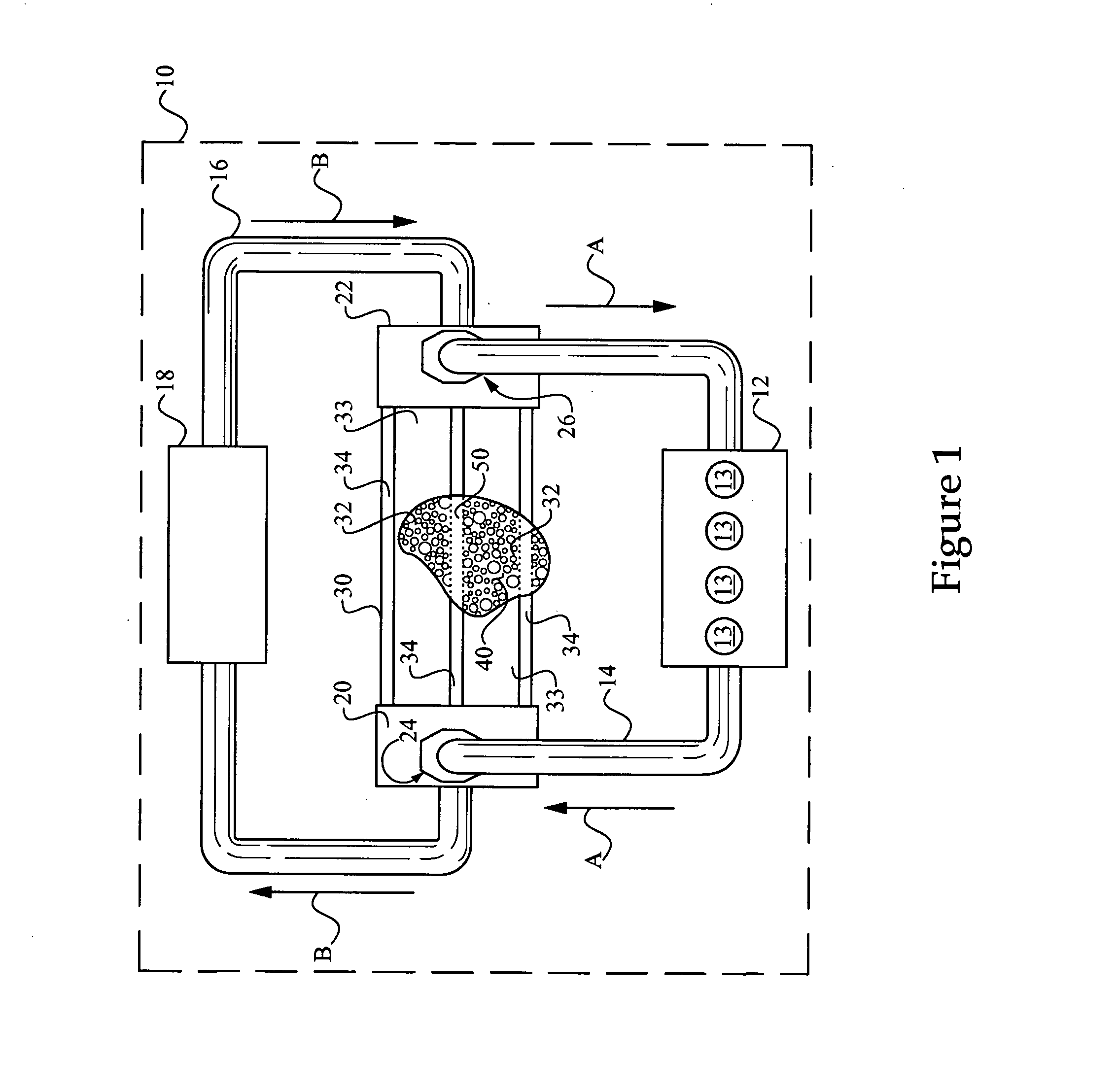Method of manufacturing metallic foam based heat exchanger
a heat exchanger and foam technology, applied in the field of heat exchangers and manufacturing methods, can solve the problems of increasing the size of the heat exchanger unit and its accompanying plumbing system, increasing the weight and complexity of the work machine, and limitations of known designs
- Summary
- Abstract
- Description
- Claims
- Application Information
AI Technical Summary
Benefits of technology
Problems solved by technology
Method used
Image
Examples
Embodiment Construction
[0017] Referring to FIG. 1, there is shown an engine system 10 according to one embodiment of the present disclosure. Engine system 10 includes an engine 12 such as an internal combustion engine having a plurality of cylinders 13. Engine 12 may comprise a compression ignition engine or a spark ignited engine, for example, or another engine type. It is contemplated that engine system 10 may be mounted in a mobile work machine, such as an off-highway work machine, or it might be a stand alone engine system such as the type used in electrical power generation, or still another type of engine system. An oil conduit 14 connects with engine 12 and is configured to circulate engine cooling oil in a conventional manner. Engine system 10 further includes a radiator 18 coupled with an engine coolant conduit 16. Arrows A illustrate a direction of engine oil flow, whereas Arrows B indicate a flow of engine coolant in a direction opposite to oil flow. In other embodiments, coolant and oil might ...
PUM
| Property | Measurement | Unit |
|---|---|---|
| Temperature | aaaaa | aaaaa |
| Temperature | aaaaa | aaaaa |
| Temperature | aaaaa | aaaaa |
Abstract
Description
Claims
Application Information
 Login to View More
Login to View More - R&D
- Intellectual Property
- Life Sciences
- Materials
- Tech Scout
- Unparalleled Data Quality
- Higher Quality Content
- 60% Fewer Hallucinations
Browse by: Latest US Patents, China's latest patents, Technical Efficacy Thesaurus, Application Domain, Technology Topic, Popular Technical Reports.
© 2025 PatSnap. All rights reserved.Legal|Privacy policy|Modern Slavery Act Transparency Statement|Sitemap|About US| Contact US: help@patsnap.com



